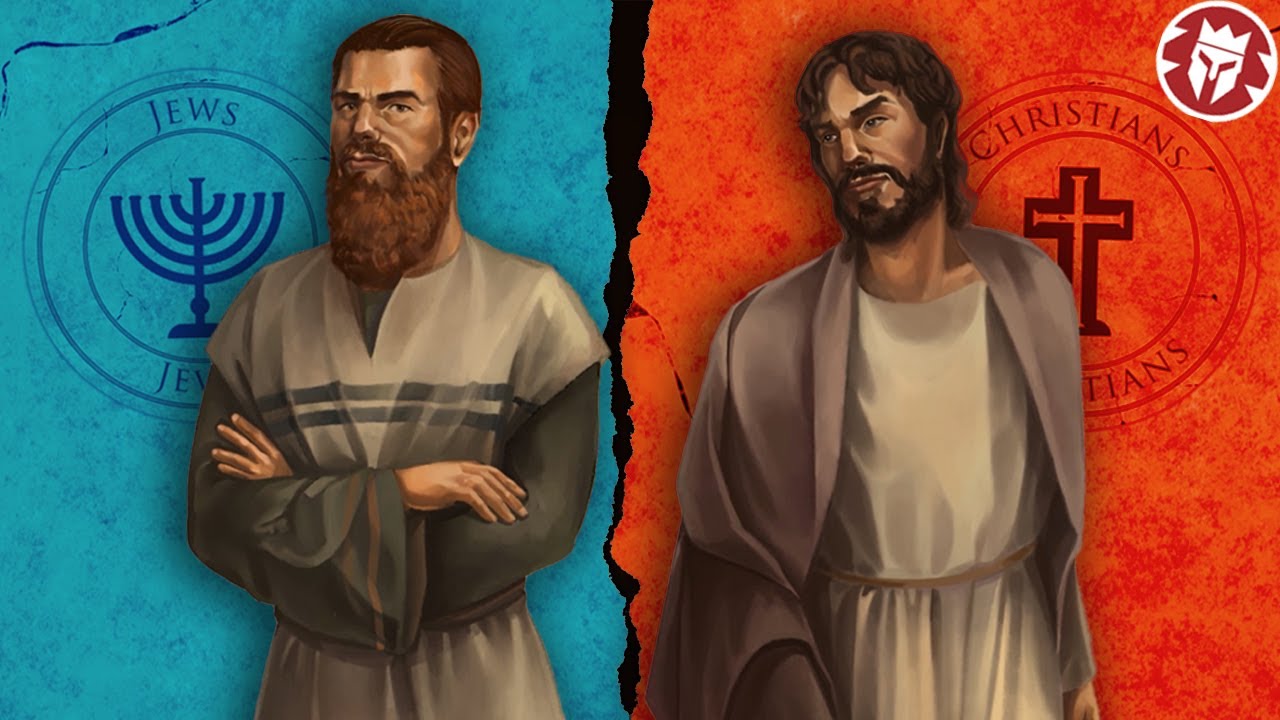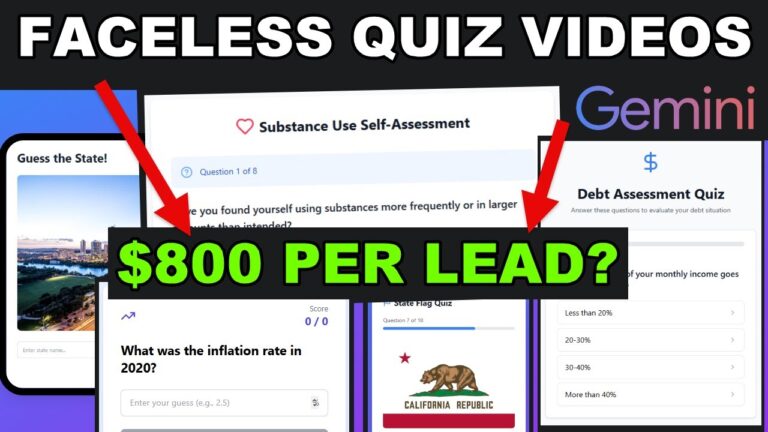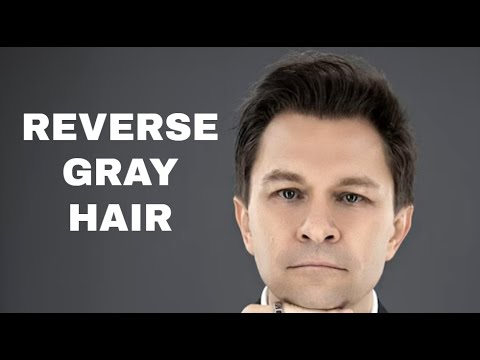Two Branches, One Root: The Long Goodbye Between Judaism and Christianity
A saga of shared beginnings, schisms, theology, empire, and identity—woven across centuries.
1a. One Faith, Many Faces
📌 00:00
📝 The Point:
• Christianity was born as a Jewish movement in 1st-century Palestine, deeply intertwined with Jewish identity.
• But over time, it morphed into a distinct faith as it spread across the Greco-Roman world.
• The question is not if, but how—and why—the split occurred.
⚖️ The Law:
• Origin doesn’t define destiny.
• Proximity breeds divergence when ideas evolve.
• Religion is as much about social identity as divine belief.
🔮 And So:
• Christianity didn’t walk away; it drifted apart.
• Shared ancestry gave way to separate identities.
• Differences grew not from rejection, but redefinition.
When do children of one house stop sharing the same table?
1b. Diversity in the Age of Empire
📌 01:53
📝 The Point:
• The Roman Empire was a mosaic of cultures and beliefs, with Greek and Latin dominating public life.
• Judaism had many sects—Pharisees, Sadducees, Zealots, Essenes—each shaped by Hellenistic ideas and political tensions.
• Christianity, influenced by the same diversity, quickly developed sectarian fragmentation.
⚖️ The Law:
• Religion doesn’t evolve in a vacuum; it breathes in the air of its age.
• Political climates pressure theological structures.
• Diversity is fertile soil for innovation—and schism.
🔮 And So:
• Christianity mirrored its mother in complexity.
• New sects brought new interpretations of Jesus.
• Fragmentation was inevitable in a world so fluid.
Can unity ever survive when too many truths try to coexist?
1c. Jew and Gentile Under One Roof?
📌 05:39
📝 The Point:
• Christianity’s early growth forced a pressing question: should Gentile converts obey Jewish law?
• Some wanted full Jewish observance—including circumcision. Others, like Paul, believed faith was enough.
• Paul’s stance prevailed, opening the floodgates for a Gentile-majority church.
⚖️ The Law:
• Inclusion often demands theological compromise.
• Laws that define identity can also divide it.
• When belief outpaces tradition, reform follows.
🔮 And So:
• Christianity universalized itself to survive.
• Jewish roots were honored—but pruned.
• What began as reform became revolution.
Can a house welcome new guests without changing its foundation?
1d. Revolts and Rupture
📌 07:51
📝 The Point:
• The Jewish revolts (66–138 CE) shook the empire. Jews faced harsh Roman retaliation, while Christians stayed out of it.
• This began the Roman distinction between Jew and Christian in policy and persecution.
• The destruction of the Second Temple reshaped Judaism, elevating Rabbinic authority.
⚖️ The Law:
• Crisis carves identities.
• Political neutrality can become a moral wedge.
• Institutions rise where structures fall.
🔮 And So:
• Christianity gained space by sidestepping rebellion.
• Judaism re-centered around law and diaspora.
• The split wasn’t doctrinal—it was circumstantial.
Is divergence a choice—or just the residue of survival tactics?
1e. Text Wars: Scriptures and Supersession
📌 10:04
📝 The Point:
• Theological rifts deepened as Christians reinterpreted Jewish texts and downplayed the Hebrew Bible.
• Figures like Marcion wanted to erase Judaism from Christianity entirely.
• Supersessionist theology (Christianity replacing Judaism) took root.
⚖️ The Law:
• Interpretation is a power play.
• Sacred texts become battlegrounds for identity.
• Exclusion often hides beneath “fulfillment.”
🔮 And So:
• The Hebrew Bible became a prequel, not a partner.
• Jewish Christians found themselves alien to both sides.
• Supersession silenced shared memory.
What’s left of a lineage when its story gets rewritten by its own children?
1f. Parallel Theologies Hardened in Contrast
📌 11:11
📝 The Point:
• Rabbinic Judaism emphasized the law as identity; Christianity emphasized grace and faith.
• Talmudic passages ridiculed Christianity as impure.
• Christian polemics grew increasingly hostile, seeking to mark Judaism as obsolete.
⚖️ The Law:
• Boundaries protect but also divide.
• Rhetoric can sanctify difference or weaponize it.
• Faiths define themselves by what they reject.
🔮 And So:
• Judaism reclaimed itself through scholarship.
• Christianity distanced itself through rhetoric.
• Mutual legitimacy became mutual suspicion.
Is truth ever truly sought, or just sculpted in reaction to the other?
1g. From Sabbath to Sunday: Symbolic Severance
📌 12:47
📝 The Point:
• Christians shifted worship from Saturday to Sunday, symbolically breaking from Jewish practice.
• Church fathers like John Chrysostom ridiculed Jews and Jewish customs.
• As Christianity gained state support, its theology turned into policy.
⚖️ The Law:
• Rituals carry cultural weight.
• Policy hardens prejudice into practice.
• Anti-Semitism often hides under orthodoxy.
🔮 And So:
• Sunday was not just a day—it was a declaration.
• The spiritual gap widened into a social canyon.
• Power made division permanent.
When beliefs become laws, can coexistence survive the courtroom?
1h. Empire Picks a Side
📌 14:30
📝 The Point:
• Constantine’s conversion to Christianity legalized it, solidifying its dominance.
• Imperial policies began treating Judaism as a tolerated but outdated faith.
• Rabbinic Judaism continued, but now in the shadow of imperial Christianity.
⚖️ The Law:
• The state shapes theology.
• Faith in power forgets humility.
• Minorities survive by retreat or reinvention.
🔮 And So:
• Christianity took the throne; Judaism held the scroll.
• Law became liturgy.
• Tolerance gave way to hierarchy.
What happens when faith and empire speak with the same voice?
1i. Echoes of Kinship Amid Division
📌 15:24
📝 The Point:
• In Carthage and Palestine, Christians and Jews still coexisted and debated.
• Some syncretic forms survived—Jewish-Christians blurred the lines.
• But these became rare and slowly vanished.
⚖️ The Law:
• Shared roots resist full rupture.
• Hybridity threatens orthodoxy.
• Cross-pollination leaves deep cultural residue.
🔮 And So:
• Echoes remained where bridges collapsed.
• Dialogue faded into dogma.
• The in-between dissolved, leaving “us” and “them.”
Can mutual heritage matter when both sides forget the song they once sang together?
1j. Islam Enters the Scene
📌 16:03
📝 The Point:
• By the 7th century, Islam emerged as another Abrahamic faith, treating Jews and Christians as distinct “People of the Book.”
• For some Jews, Islamic rule was preferable to Christian persecution.
• Islam formalized the division with legal and theological clarity.
⚖️ The Law:
• New players reshape old dynamics.
• Sometimes safety comes from unexpected siblings.
• Theological clarity simplifies social contracts.
🔮 And So:
• The family tree gained a new branch.
• Old rivals became parallel ancestors in Islam’s theology.
• The split was no longer debated—it was history.
Does a third sibling bring reconciliation—or just more rivalry?
1k. The Song Remains the Same
📌 17:30
📝 The Point:
• Despite centuries of conflict and divergence, Judaism and Christianity still draw from the same sacred springs.
• The Song of Songs captures a shared poetic longing that predates the schism.
• The closing sentiment reminds us: division doesn’t erase origin.
⚖️ The Law:
• Heritage is deeper than history.
• Poetry preserves what polemics can’t.
• Faith transcends fences when hearts remember.
🔮 And So:
• The split is real—but the root remains shared.
• Each faith bloomed in its own field.
• The yearning for divine connection binds them still.
Can we remember the harmony in our origin, even as we speak in different tongues?
Glossary
• Second Temple Judaism: The form of Judaism that existed during the time of Jesus, centered around the Temple in Jerusalem.
• Gentile: Non-Jewish person, central to early Christian inclusion debates.
• Supersessionism: The theological claim that Christianity replaces or fulfills Judaism.
• Rabbinic Judaism: Post-Temple form of Judaism centered on rabbinic teaching and law.
• Ebionites/Elkesaites: Jewish-Christian sects blending Mosaic law with belief in Jesus.
• Talmud: Central text of Rabbinic Judaism, compiling Jewish oral law.
• People of the Book: Islamic term for Jews and Christians recognizing their scriptural origins.







